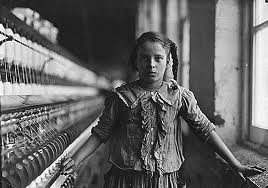
The first industrial revolution
The industrial society began in England during the 1700s, thanks to the invention of machines that, since then, have supported the work of men and have allowed a higher production than in the past: with the machines it was passed from handcrafted to industrial and work focused at factories.
This phenomenon was called "industrial revolution" because it brought profound and final change in the history of society, not only in the way we work, but also, and especially, in the habits and environment.
The way of working was based on the division of labor: there was the craftsman who carried out an object from beginning to end, and now the workers had their work that was set, all day behind a machine.
Now all was produced in series, in large quantities and for a short time, and not as before, to produce a given product was necessary to work for the whole day.
The life of people also changed because industrial products were less expensive than handcrafted ones, and they spread and became more affordable for everyone.
It also transformed the environment: the city filled with factories and soon railways, roads, bridges and tunnels were built for the transport of both raw materials and finished products from one place to another in the world.
The industrial revolution led to a serious deterioration in the living conditions of workers: factory owners paid workers miserable wages, the workers had many children who began to earn as soon as possible too. Thus a new social class was born, the so-called proletariat that was identified as those people who had no wealth other than their children.
Inevitable consequence was the spread of child labor: children were employed at 5 age, they worked sixteen hours a day, and were paid even less than adults.








